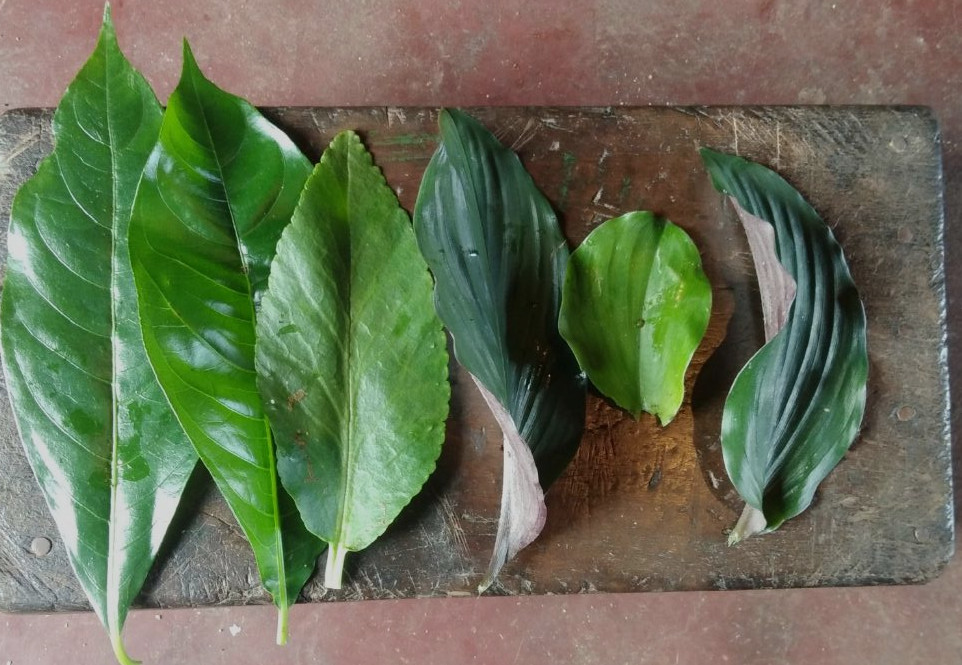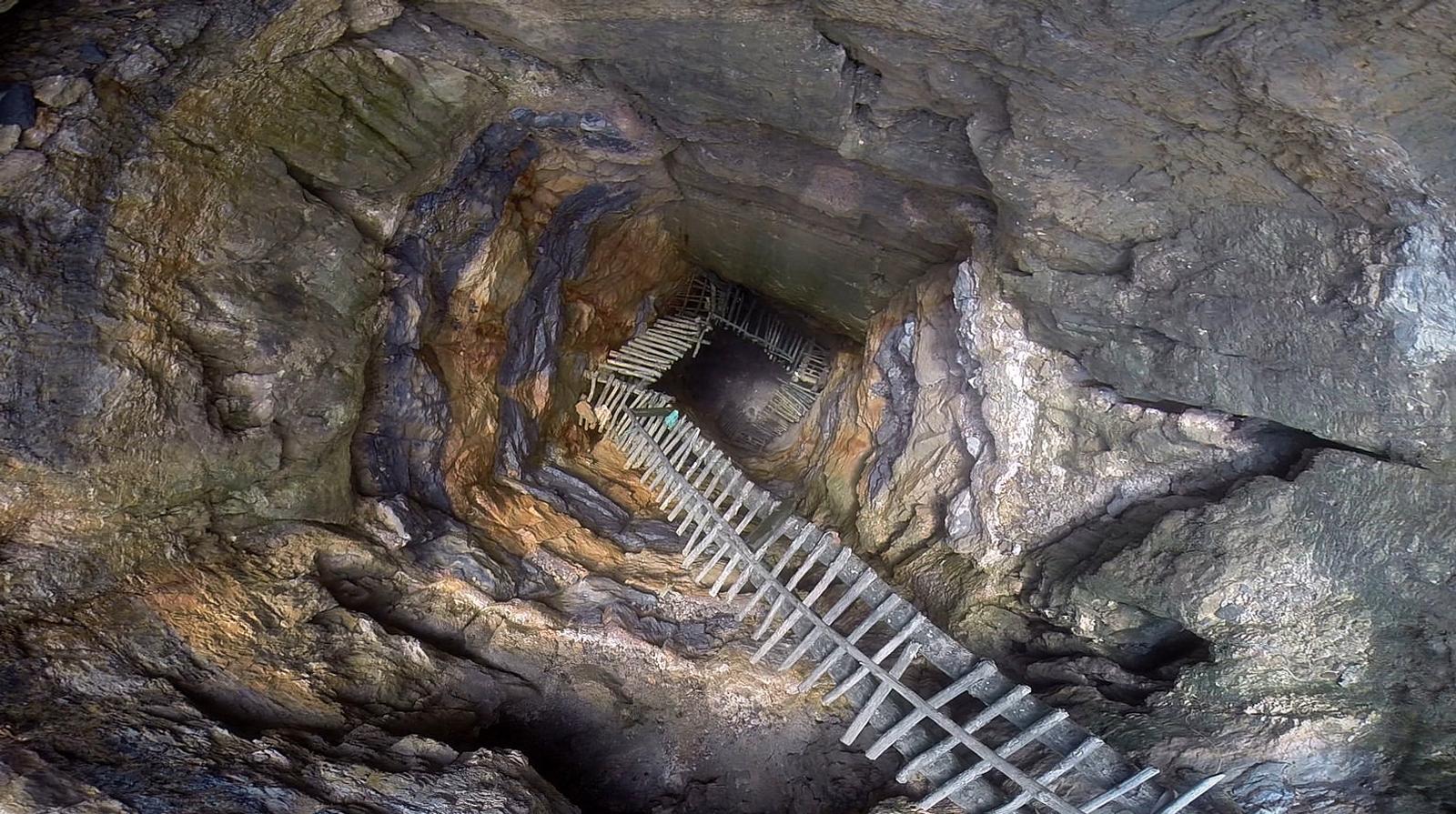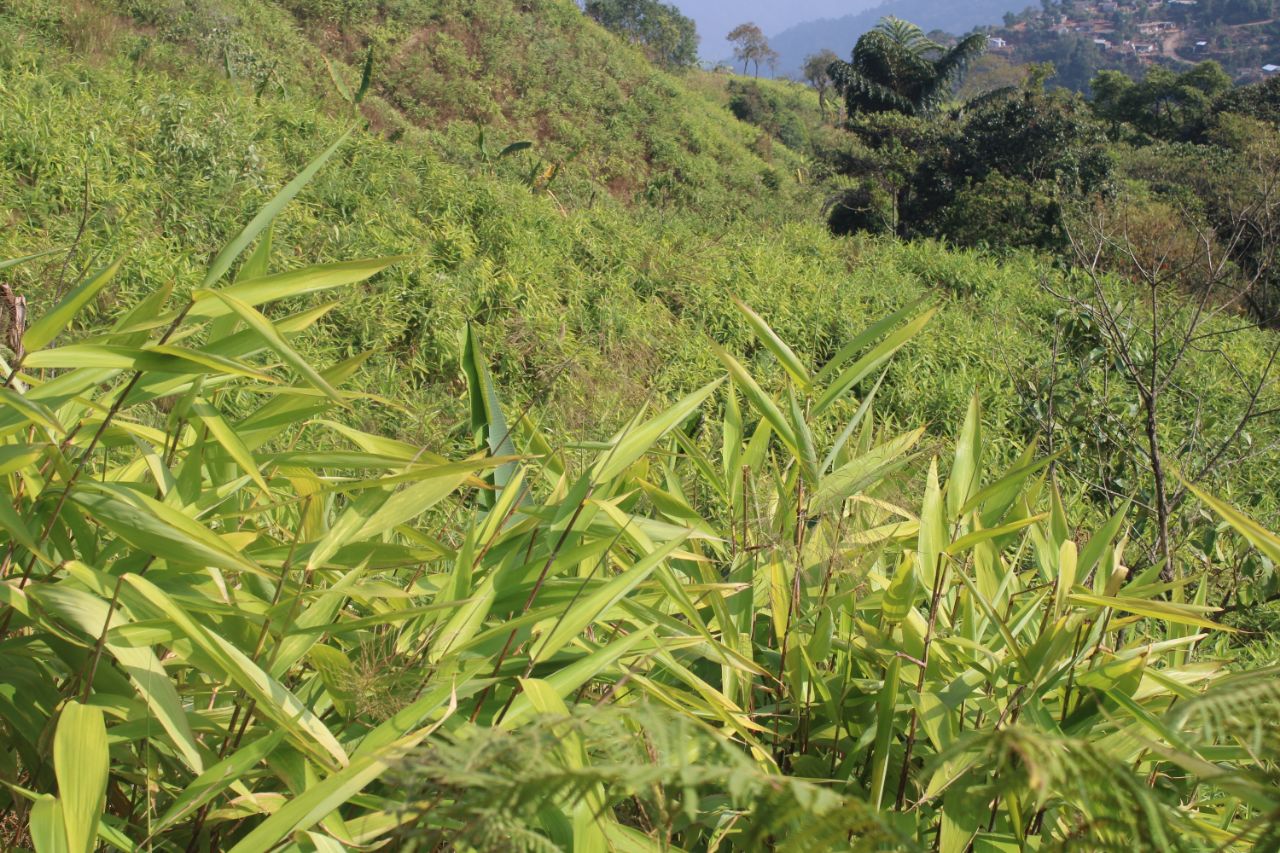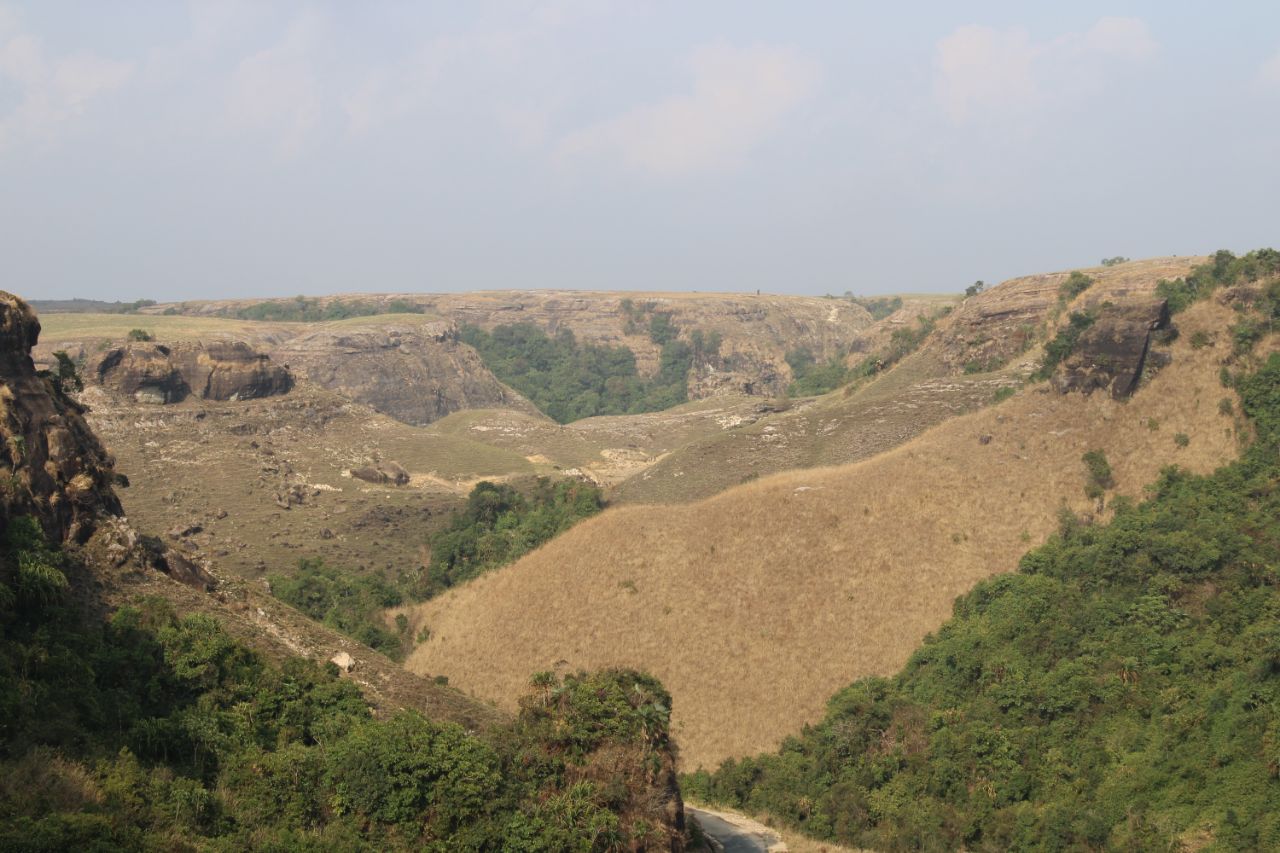Environmental Health
Paths Towards Vulnerability

Development and Precarity
Indigenous peoples steward 80% of global biodiversity on traditional Indigenous territories (22% of the world’s land) while comprising 5% of the world’s population (Schuster et al. 2019). Indigenous caretaking of forests nurtures biodiversity. Here we use the example of Khasi peoples to explore how introducing colonial and invasive practices impacts the forests and creates long-term challenges for the Indigenous community. The rights enjoyed under the Indian Constitution (the Sixth Schedule) enable Khasi to care for the sacred forests that sustain their herbs and plant medicines.

Today, these rich environments are central to Khasi; these forests help cultivate traditional medicine as Indigenous pharmacies. Without these forests, Khasi become more vulnerable both to common ailments like broken bones and global pandemics like COVID-19.

Threats to Biodiversity
And yet questions remain. How have influences such as deforestation, coal/limestone mining, and other forces that have altered forest health also impacted human health? How might pandemics be triggered by related processes? Following, we will explore how intersecting feedback loops may reinforce changes in the non-human landscape, in similar ways to how a rat-hole coal mine impacts the water table.

The Introduction of Cash Crops and Mining
In the 1980s, with the goal to eradicate poverty and bring economic development to rural Meghalaya, the central government began to push cultivation of broom grass as a cash crop system (Nongkynrih 2012). Within a decade, the production of broom grass had expanded tenfold. This led to Meghalaya being known as India’s ‘Jharu State’ (broom state), because it supplies brooms to the entire nation. Broom grass (known as synsar in the Khasi language) is used in the daily chores of Khasi peoples, but according to their traditional beliefs, broom grass is also considered Ka Sang (taboo) because it is believed to bring bad luck and ill health (Nongkynrih 2012). Brooms should not be wielded against other people, but only used for cleaning the floor, and kept away from others when not in use for cleaning (Nongkynrih 2012). Cultural taboos against the broom are also notable here in a metaphoric sense; broom grass plantations have not benefitted Meghalaya’s forests and have even begun to gobble up the fertile kitchen gardens, thus impacting Khasi food supplies. Broom grass plantation and mineral resources, like coal and limestone, have significantly shaped the state’s expanding economy from the 1970’s onward, but have also played an outsized role in ecosystem change. Also, these central resources also played an outsized role in ecosystem change. Taken together, the government’s push toward broom grass monocrops and mining have generated new forms of social inequality, health impacts, deforestation, and eventually the pollution of waterways and soil.
Transformation of the Forests (2000-2019)
Mining and broom grass plantations in Meghalaya have exacerbated forest cover loss in recent decades. Meghalaya’s changing forests can be observed on this map bellow. The map depicts areas that lost forested lands between 2000 and 2019. Orange areas represent 2 to 10 years of forest lost, and red areas represent locations with at least 10 years of forest lost (Methodology from Hansen et al., 2013). While data for the same period is not available, state data demonstrates that during the first 20 years of its cultivation in the state, broom grass production increased 53%, from 194 metric tons to 10,189 metric tons (between 1979 to 1999) (Government of Meghalaya, 2003).
Pink areas represent forest loss since 2001 (Methodology from Hansen et al., 2013).

The Ecology of Broom Grass
Why is broom grass such a problem? After broom grass takes root and begins to flourish, it destroys the soil quality and dries up the local water supply. It reproduces on its own and easily begins to encroach upon forested lands and farmlands. Once it has taken root, broom grass is very difficult to get rid of.
Historically, broom grass was not believed to be commercially viable, and thus people would plant it in difficult terrain or low fertility soils. Knowing this tendency of broom grass to invade the land of surrounding plants and impede the water supply, farmers never put it near their food gardens or even market produce fields.
Khasi broom grass farmers must navigate steep hillsides for growing and harvesting broom grass. After the broom grass is harvested, under the jhum (swidden) system of agricultural rotation, these fields are burned to trigger the land’s rejuvenation, and another field of broom grass grows anew.
State development programs introduced broom grass as a cash-crop system, and the market economy further inspired many farmers to switch from food grains to broom grass (Nongkynrih 2012). In the 1980s to fight poverty, the government of Meghalaya incentivized the rural poor to adopt new techniques and crops, especially focusing on crops that require little maintenance, like broom grass (Nongkynrih 2012).

Cash Crop and Environmental Impact
National demand for broom grass has triggered environmental impacts and exacerbated social inequality (Nongkynrih 2012). For example, these include loss of water supply, loss of soil fertility, loss of biodiversity, decline of paddy production, and an increase social inequality (more land under control of fewer people), a shift in traditional jhum (swidden) agriculture, the exploration of forestland, and deforestation.
As one healer explained, the jhum (swidden) system, used to clear the land for broom grass, can introduce new health issues because of how it transforms the land. In his words:
“The jhum system (system of shifting cultivation), the fire in the forest, and the untimely felling of trees where these herbs grow or climb. All these have brought destruction and quickly made these herbs extinct from the surface of the earth. If the forest has been destroyed, the wind can blow so quickly without any obstruction and it can carry along with it dirty particles of the soil. When men breathe it in they suck all these dirty particles inside their bodies, and these may cause them to catch all types of diseases. The spraying of pesticides in the paddy fields or potato fields poisons the herbs that grow in the fields nearby and if any herbal practitioner plucks and uses them, the juice of these herbs will bring harm to the person who drinks them.”
Ecosystems at Risk

Biocomplexity
Through a process where multiple complex systems interact and create change, known as “biocomplexity” (Michener et al 2001; Palmer et al 2021), fragile landscapes are first subjected to oil, coal, mineral extraction, and/or biofuel crop production, which increases their vulnerability. These communities made vulnerable by the mining then enter a negative feedback loop wherein the resources extracted exacerbate greenhouse gas emissions further feeding the climate catastrophe. Climate change cannot be understood as simply a climate-altering process, but one that is much more complex. Climate change pushes habitat drift which in turn increases the risk of new viruses and other negative health effects. This is only compounded by resource colonialism’s impacts on Indigenous communities by transforming the land and making it more sensitive to change. Importantly, the forest pharmacies that Indigenous peoples depend upon may be heavily altered, or destroyed. Ultimately, these Indigenous communities are rendered more precarious, more vulnerable to social and economic injustice, and in turn more precarious in responding to ecosystem destruction.

Emerging Pandemics
Pandemic emergences do not only pose the problem of habitat drift but can lead to the loss of landscapes. The loss of these landscapes then triggers cultural ecocide when entire cultures no longer have access to their resource base and are unable to meet their basic needs (Whyte 2019; Gilio-Whitaker 2017). Communities who have the most intimate relationship with the landscape are likewise extremely vulnerable to the impacts of ecosystem destruction. When forest buffer zones tended by Indigenous communities are deforested or destroyed, mammals formerly inhabiting these regions become homeless, encroaching on more densely populated regions and triggering viral spillover events. In this way, zoonotic spillover events can trigger the spread of new diseases (Calisher et al. 2020). While the hollowing out of ecosystems has been foundational to dispossession of land under settler colonialism, COVID-19 exacerbates all of this by an order of magnitude, channeling it into a series of feedback loops that feed the very crisis that fostered the initial loss of habitat.

Ecosystem Vulnerability
The emergent field of Planetary Health has cautioned that development models rooted in the failures of imagination, knowledge, governance, and an over-reliance on profit-oriented economies are pushing us towards future disasters (Whitmee et al. 2015). While biocomplexity provides us the tools to link ecosystem degradation with climate change and other complex feedback cycles, it may still be a couple steps removed from helping us understand how pandemics emerge, a process which depends on virus mutation to enable viruses to successfully latch onto human biology (Wade 2021). Our conversations with nongai dawai khasi (Khasi traditional healers) provide some hints to think about connections between living forests and human health, that suggest another approach to biocomplexity.